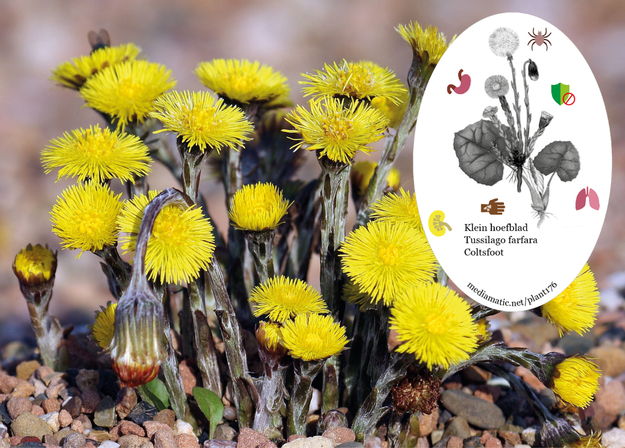An effective demulcent and expectorant herb, coltsfoot is one of the most popular European remedies for the treatment of a wide range of chest complaints. It is widely available in health food shops. The leaves are commonly used in Europe, though the flowering stems (which contain higher levels of pyrrolizidine alkaloids) are preferred in China. They are rich in mucilage and are the main parts used, though the root is also sometimes employed. Pyrrolizidine alkaloids have a toxic effect upon the liver, but are largely destroyed when the plant is boiled to make a decoction. Some caution should be employed in the use of this remedy - the flowers should not be used except under professional supervision, the leaves should not be used for more than 4 - 6 weeks at a time, the herb should not be taken whilst pregnant or breast-feeding and it should not be given to children under the age of six. Modern research has shown that extracts of the whole plant can increase immune resistance. In a Chinese trial 75% of patients suffering from bronchial asthma showed some improvement after treatment with this plant, though the anti-asthmatic effect was short-lived. The leaves are harvested in June and early July, the flowers are harvested when fully open and the root is harvested in the autumn. All can be dried and used as required. The plant is antitussive, astringent, demulcent, emollient, expectorant, stimulant and tonic. It is widely used in the treatment of coughs and respiratory problems and is often candied so that it can be sucked as a sweet. The plant is of particular use in the treatment of chronic emphysema and silicosis, helping to relieve the persistent cough associated with these conditions. Coltsfoot is particularly effective when used in combination with liquorice (Glycyrrhiza species), thyme (Thymus vulgaris) and wild cherry (Prunus serotina). A poultice of the flowers has a soothing effect on a range of skin disorders including eczema, ulcers, sores, bites and inflammations. A bitter, tonic and diaphoretic preparation can be obtained from the root. Source: https://pfaf.org/
Coltsfoot
Tussilago farfara
Find more about this plant on Wikipedia.
